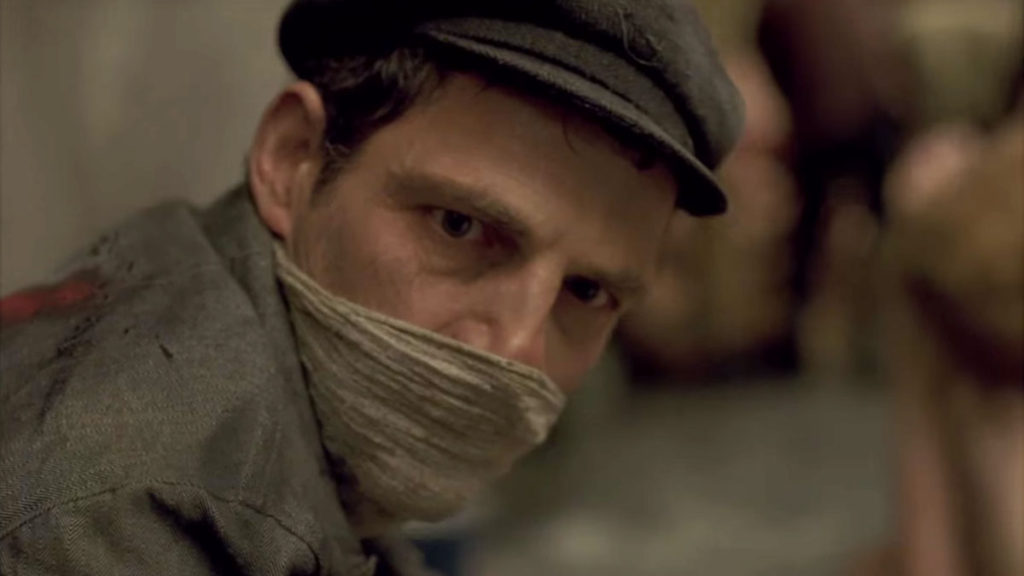Cannes: Son of Saul review
 Son of Saul opens with an establishing shot that appears to be entirely out of focus. After a few moments where it’s impossible to see what is being presented, the image is suddenly consumed with a face, the only thing held in focus by a shallow depth of field.
Son of Saul opens with an establishing shot that appears to be entirely out of focus. After a few moments where it’s impossible to see what is being presented, the image is suddenly consumed with a face, the only thing held in focus by a shallow depth of field.
The face is that of Saul (Geza Rohrig), a Hungarian-Jewish prisoner in an Auschwitz concentration camp. Saul is a Sonderkommando, one of a group of prisoners who are given very marginally better conditions in exchange for carrying out special duties. He works as part of a team made responsible for the showers into which new prisoners are led and then gassed to death.
Director Laszlo Nemes does not shy away from the raw brutality of the facts, but notably never shows the audience a clear view of what is occurring. Upsetting images can be seen but only briefly, or again obscured through shallow depth of field.
Nemes’ concern is Saul, and so the camera stays close in on Rohrig. There is a feeling of being trapped with the man, and the 1.37:1 ratio and very tight framing creating a claustrophobic atmosphere for almost the entire running time. As a result, the film does a tremendous job of embedding the audience in its location.
Nemes has created an entirely convincing world with an extraordinary sense of confinement and the production design succeeds in creating the sense of an actual camp, filled with prisoners. The sheer number of extras on the set and the prop work necessary to populate their space are both highly commendable displays of filmmaking determination, all the more impressive when you consider that this world is only glimpsed briefly in the background, the camera otherwise remaining fixed on Saul’s attempts to navigate the chaos and horror.
From early in the film, Saul’s mind is laser focused on a single point of obsession. It start when Saul discovers a young boy still alive in the showers after the gas has stopped. He dies shortly afterwards, but Saul becomes and remains convinced that this boy was his son – though the audience are left unsure as to whether or not this is actually the case – and he makes it his purpose to give the boy a proper Jewish burial.
Of course, this won’t be easy and Saul must make several deals and take many risks in pursuit of his goal. Audiences may interpret Saul’sdedication in a number of ways, but it appears to me that this is his one chance to do something good, an act of defiance, an act of love, and an opportunity to not let the Nazis win, even if only in a smaller way.
Saul says to another prisoner, ‘We’re already dead’. This is not a story of physical survival but one of emotional survival, and while Saul may be beaten down in every way imaginable, his humanity remains.
Nemes approaches the emotional significance of his story with a lightness of touch, and while the film deals with an undending brutality and harrowing inhumanity, this is related through the experience of the film, not through exposition or a contrived narrative. This is, all in, an astonishing technical achievement from first time director Laszlo Nemes. He has clearly learned a great deal from his mentor Bela Tarr, but also started to carve out his own path too.
The horrors portrayed in Son of Saul will get under the audience’s skin and into their bones. This film hurts, and the pain will rightly remain long after the credits have quietly unspooled.